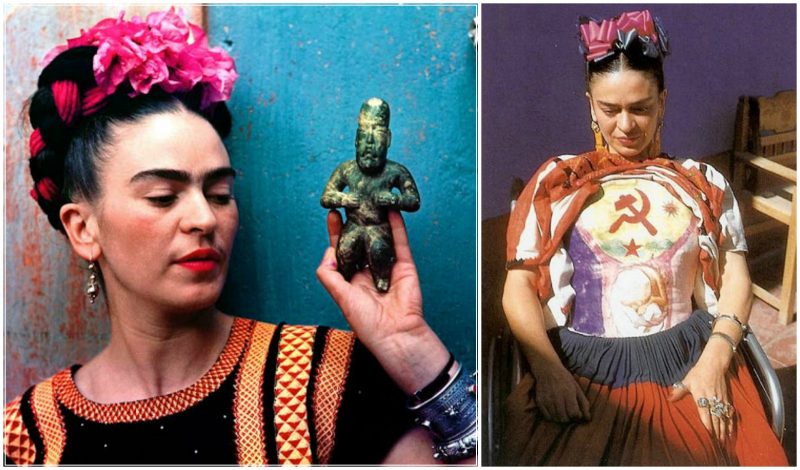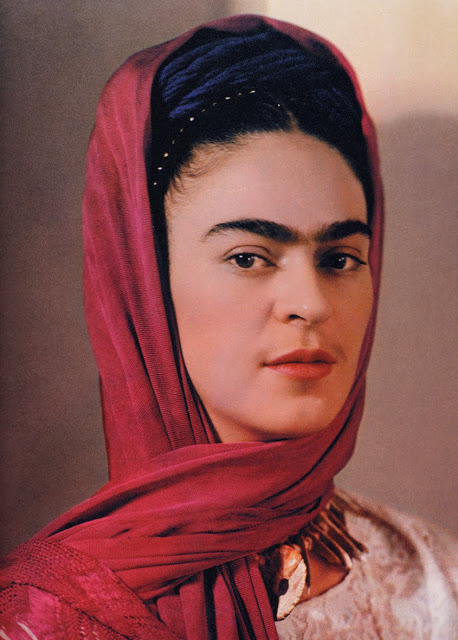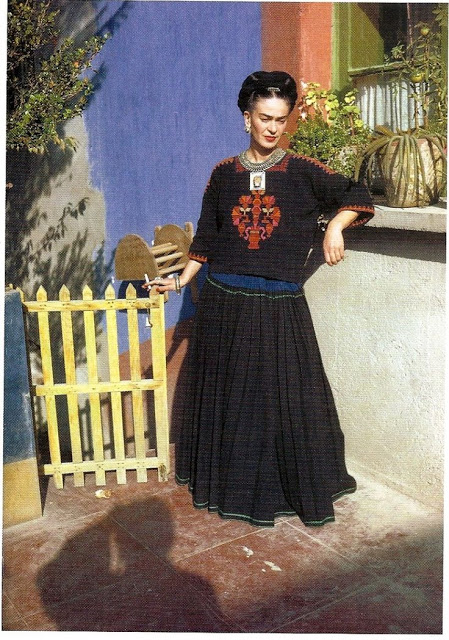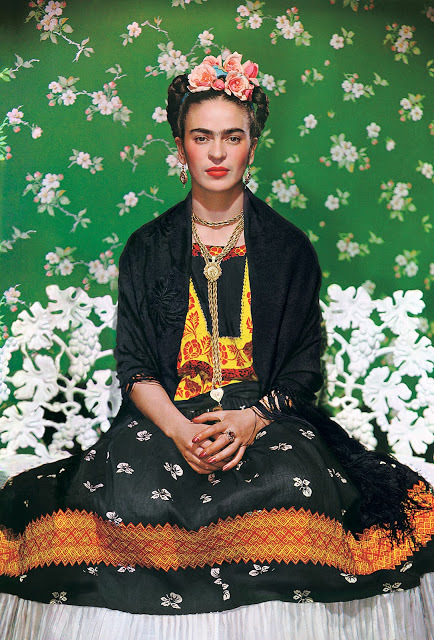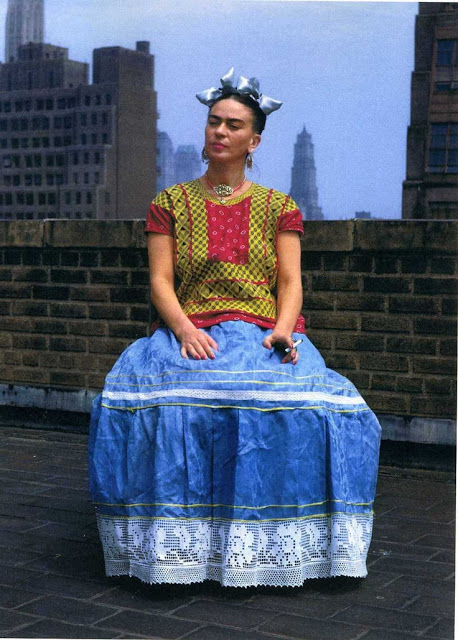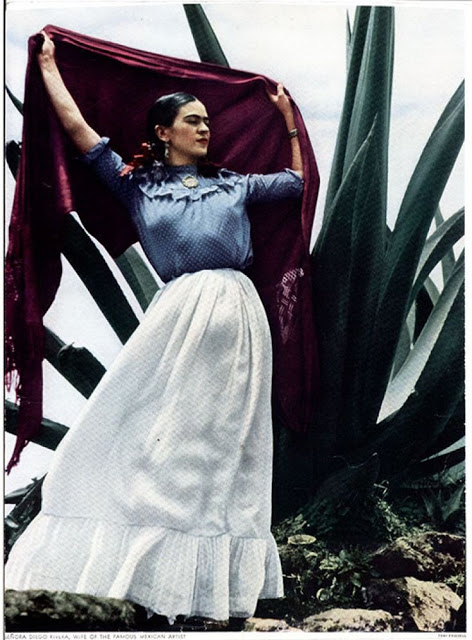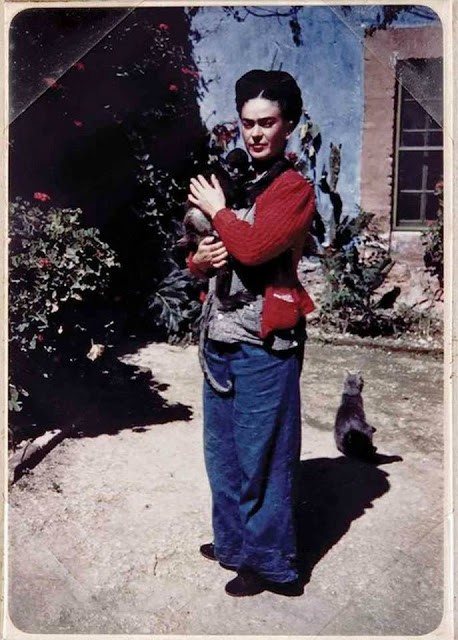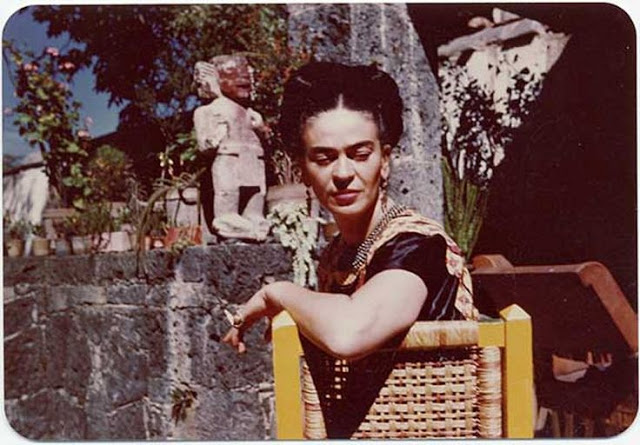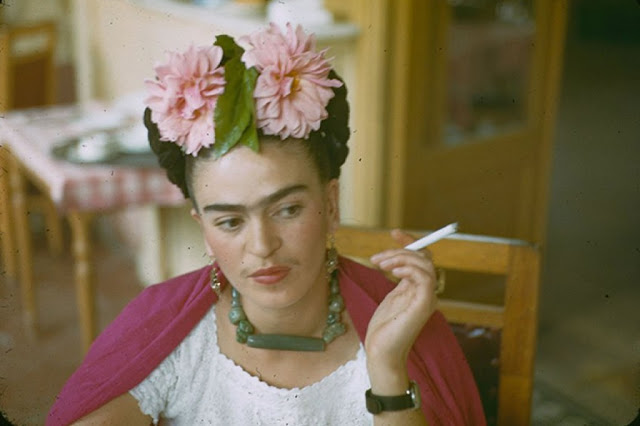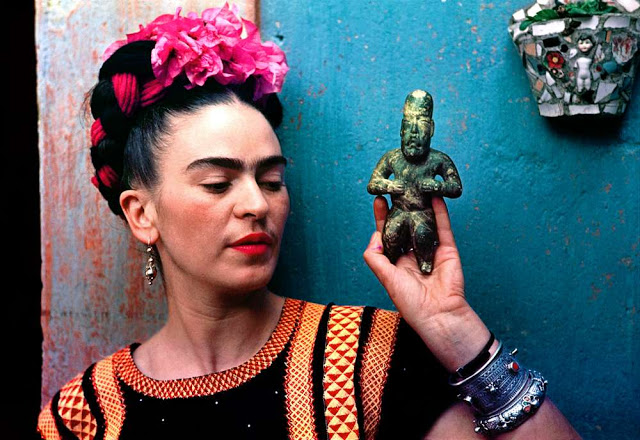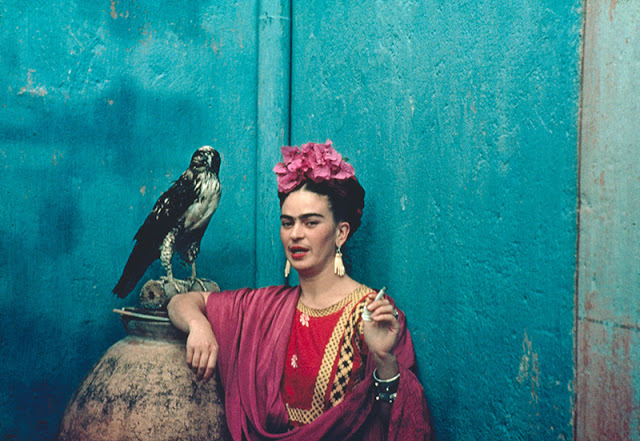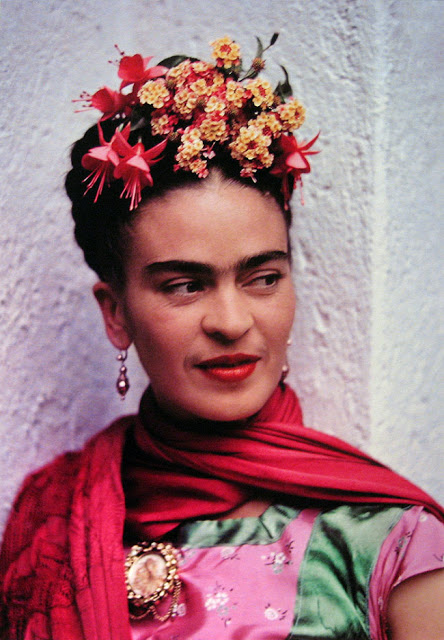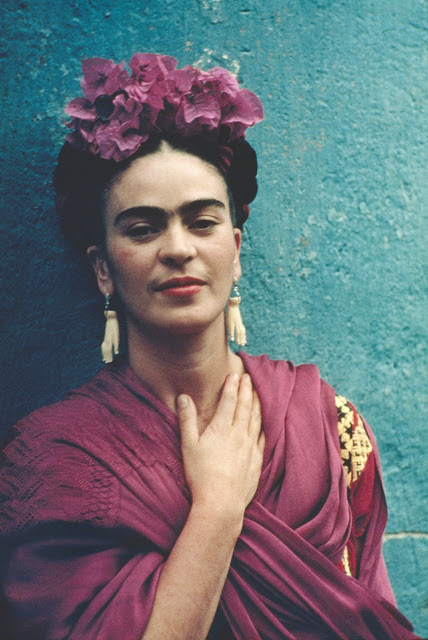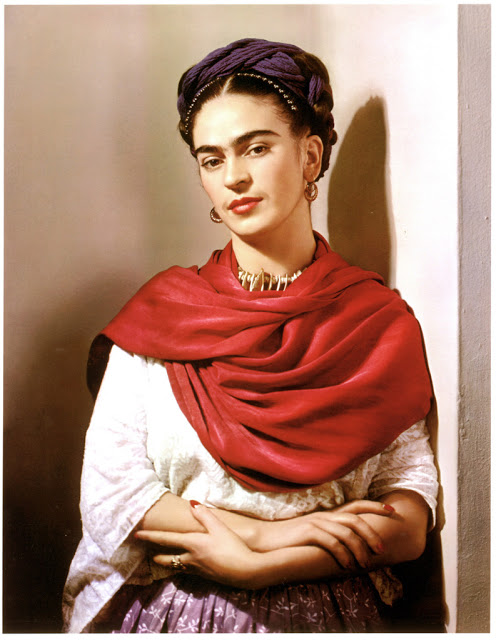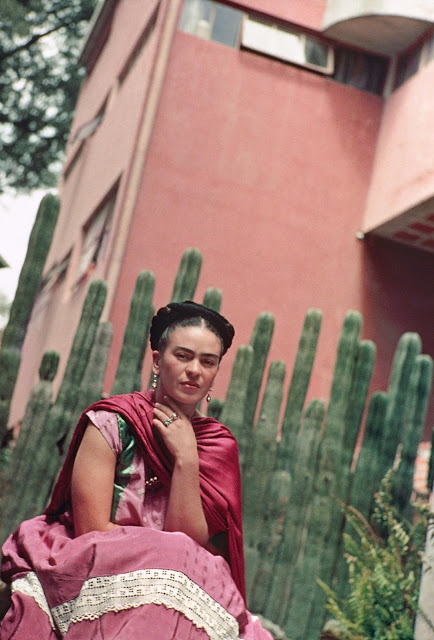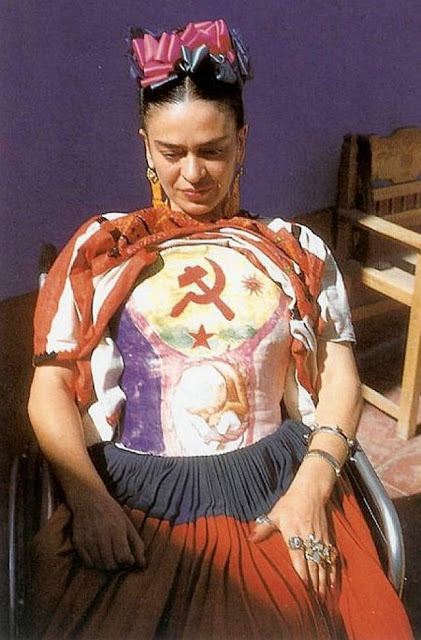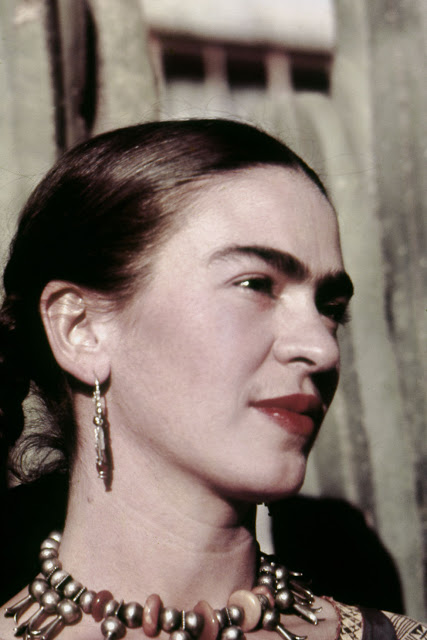Before Salma Hayek portrayed the tragic Mexican painter, Frida Kahlo – she was a popular figure only among the artists and the art students. However, now Frida Kahlo, her rather tragic story and her authentic personal style are a still a vital part in the pop culture.
When she was a young girl she aspired to be a successful doctor and help people, which is ironic since she was sick and in pain most of her life.
Frida Kahlo was born on July 6, 1907, in Coyocoán, Mexico City, Mexico. Considered one of Mexico’s greatest artists, Frida Kahlo began painting after she was severely injured in a bus accident at age 18.
She exhibited her paintings in Paris and Mexico before her death in 1954.
After her accident, Kahlo abandoned the study of medicine and began to paint, to occupy herself during her three-month immobilization. Self-portraits were a dominant motif then. Kahlo once said, “I paint myself because I am so often alone and because I am the subject I know best.”Her mother had a special easel made so she could paint in bed, and her father lent her his box of oil paints and some brushes.The 1926 painting, entitled Self Portrait in a Velvet Dress, shows her with a long and narrow face and neck, reflective of Italian Renaissance ideals.
Kahlo’s accident made it impossible for her to have her own children, resulting in a miscarriage when she became pregnant. Because of this, many of her pieces reference reproduction failure. She painted Henry Ford Hospitalright after her miscarriage in 1932. In this work, Frida depicts herself on a bed bleeding, with the cold and industrial feeling from being in Detroit, shown behind her. She chose to paint on a sheet of metal.
Kahlo created at least 140 paintings, along with dozens of drawings and studies. Of her paintings, 55 are self-portraits which often incorporate symbolic portrayals of physical and psychological wounds. She insisted, “I never painted dreams. I painted my own reality.
Diego Rivera had a great influence on Kahlo’s painting style. Kahlo had always admired Rivera and his work. She first approached him in the Ministry of Public Education, where he had been working on a mural in 1927. She showed him four of her paintings, and asked whether he considered her gifted. Rivera was impressed and said, “You have got talent.” After that, he became a frequent welcomed guest at Kahlo’s house. He gave her many insights about her artwork while still leaving her space to explore herself. The positive and encouraging comments made by Rivera strengthened Kahlo’s wish to pursue a career as an artist
As a young artist, Kahlo communicated with the Mexican painter Diego Rivera, whose work she admired, asking him for advice about pursuing art as a career. He recognized her talent and encouraged her artistic development. They began an intimate relationship and were married in 1929, despite the disapproval of Kahlo’s mother.
Active communists, Kahlo and Rivera befriended Leon Trotsky during the late 1930s, after he fled Norway to Mexico to receive political asylum from the Soviet Union during Joseph Stalin’s leadership. During 1937, Trotsky lived initially with Rivera and then at Kahlo’s home where he and Kahlo had an affair.Trotsky and his wife then relocated to another house in Coyoacán where, in 1940, he was assassinated. Both Kahlo and Rivera broke withTrotskyism and openly became supporters of Stalin in 1939.In 1938, Kahlo travelled alone to New York City for her first solo exhibition; she was celebrated “like a movie star”. There she met Hungarian photographerNickolas Muray, with whom she began a 10-year love affair.
In July 1952, Frida’s right lower leg was amputated at the knee due to gangrene. She had had a bout of bronchopneumonia about that time, which left her quite frail. She was very ill throughout 1954.Diego attended to Kahlo as she had anxiety attacks. She increased her morphine consumption, betrayed by the unusually fleeting paintbrush in her paintings. In her last self-portrait, she looks like a withered sunflower, “no moon at all”. A few days before her death, Kahlo participated in a demonstration against the CIA invasion of Guatemala.
Kahlo died on July 13, 1954, soon after turning 47, and was cremated according to her wishes. A few days before her death, she wrote in her diary: “I hope the exit is joyful — and I hope never to return — Frida”.The official cause of death was given as a pulmonary embolism, although some suspected that she died from an overdose that may or may not have been accidental. No autopsy was performed. In his autobiography, Diego Rivera wrote that the day Kahlo died was the most tragic day of his life, and that, too late, he had realized that the most wonderful part of his life had been his love for her.
